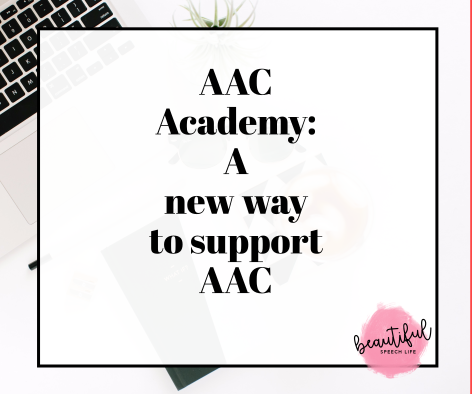
by Anne Page | May 5, 2018 | AAC
Where did you learn about AAC? Hopefully, if you are a recent SLP graduate you took an AAC class as part of your master’s degree program. But what if you graduated a while ago? Or what if you find yourself suddenly needing to know more? AAC Academy is a new way to learn more about AAC; it might be just what you need.
Of course, you want to help the kids who have AAC devices (or desperately need AAC devices), but you just don’t have the experience, or the knowledge base, or the confidence-never mind the time it would take to get caught up on the latest EBPs for AAC intervention. So you tell yourself you’ll get to it later. Only later never comes, and those kids are out there waiting for you NOW!
Why is it we feel so confident when it comes to almost all of our amazing scope of practice, yet when it comes to serving kids with complex communication needs, we feel our SLP self-confidence slowly slipping away?
I know just how you feel! When I started out in this field a decade ago, I had no idea what I was doing. I had so many questions.
Now, I can see you struggling too. We all feel bad for the kids because we want the very best for them. That’s when I knew I had to do something. Something had to change.
I’ve seen AAC build amazing communication bridges. If the people in a child’s life are afraid to use AAC, I hate to think of how many children are really missing out. It’s time to change that.
So I had to create AAC Academy.
Imagine feeling truly confident in your ability to bridge that communication gap. See yourself helping families connect and children become more successful in the classroom.
Imagine giving a student the gift of increased independence and expressive language. Now, instead of throwing a tantrum when he wants his favorite toy, he’ll be able to use AAC to “say” “I want my toy”. You’ll be giving him the ability to clearly express “I like” or “I don’t like”. You’ll opening a whole new world for him.
It’s time to AAC Like a Boss.
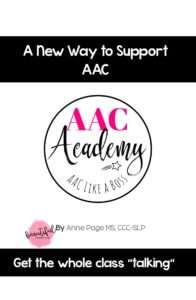
My academy-stye group AAC “coaching” program will build your SLP skills, increase your confidence, and allow you to help ALL of your students strengthen their communication skills.
AAC Academy will answer your AAC questions:
With AAC Academy you’ll confidently jump in
- What core words do I start with?
You can feel on top of your game with a complete plan and the support you need
- How long do I teach each core word before I move on?
Understand the theory and research behind modeling language for your students
- How do I model and teach core vocabulary?
See video modules with specific easy to implement example
- How do I deal with multiple different devices in a classroom?
You’ll gain knowledge to make group therapy work for all devices
- What if my student just wants to push buttons?
Learn strategies and techniques that allow time for exploration and time to “work”
Benefits:
- Confidence-build knowledge of AAC
- You’ll have support, no more going it alone
- Help kids find their voice and truly make a difference
- Expand your skill base, overcome technology fears
- Save time-videos and modules are bite-sized (no huge time commitment)
- Connect with like-minded SLPs/educators in the Facebook group
To join the AAC Academy click here.
Note: Early Bird pricing is in effect until May 15, 2018. This is a great chance for you to lock-in at a low price.

by Anne Page | Jan 13, 2018 | AAC, SLP Like a Boss
Want solid AAC and Assistive Technology ideas and tips for school speech therapy? Watch this engaging interview with AT Specialist Chris Bugaj. We talk about the importance of presuming potential, core vocabulary, motor planning, aided language stimulation and AAC in the IEP. You’ll also learn the AAC mistakes we both made.
Click below to watch or click here.

I was lucky enough to spend two days at an Assistive Technology workshop for school districts across Arizona led by Chris Bugaj. Chris is a Licensed Speech – Language Pathologist in Virginia with Certificate of Clinical Competence. He is also the founding member of the Loudoun County Public Schools’ Assistive Technology Team.

Chris is not only knowledgeable, he’s an engaging speaker with contagious enthusiasm for all things AAC and Assistive Technology.
Big AAC Takeaways You Don’t Want to Miss: (or advice for the new SLP who’s a little scared)
- You have to own this! If you’re inspired, you can inspire others.
- Believe in your student; presume potential.
- Understand the fundamentals of AAC.
- Aided Language Stimulation is a must
- You don’t write an AAC goal, you write a language goal. Lean on your language expertise to be able to write better goals.
Check out these highlights:
The staircase analogy 11:00
Core vocabulary and the cell phone analogy 15:23
Mistakes Chris and I both made 17:00
How to approach AAC and AT in the IEP 23:00
My “aha” moment (a different way to look at back-up AAC) 25:00
Resources:
http://bit.ly/aacquadrant
Where to find Chris Bugaj:
https://attipscast.com/
Twitter@Attipscast
Want to get started with Core Vocabulary but aren’t sure how? Click here Quick Inexpensive Way to Get Started with Core Vocabulary.

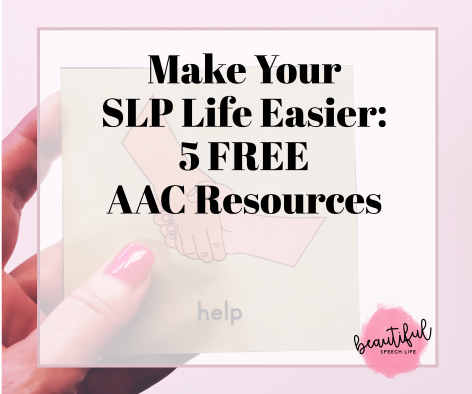
by Anne Page | Dec 11, 2017 | AAC, Freebies
I learned so much at the ASHA convention in Los Angeles that I just had to share it with you. After attending outstanding presentations on AAC, I have to let you in on some of my biggest aha moments and takeaways. These five free AAC Resources will make your SLP life easier.
1. AAC for students with visual impairments
This year I’m working with several students who not only have complex communication needs but they also have a visual impairment. These are the kids that I think about a lot. Trying to strategize and come up with some type of a communication system for them is really challenging.
Laura Stone gave an amazing presentation that included resources for purchasing tactile communication systems using Core Vocabulary and suggestions for how to create your own.
STACS: Standardized Tactile Augmentative Communication Symbols Kit is available online
Texas School for the Blind & Visually Impaired has standardized a Tactile System (FREE guide) http://www.tsbvi.edu/images/attachments/Tactile-Symbol-List1.pdf
And you can make your own symbols too using corrugated plastic or cardboard. I’ll be diving deeper into this subject in an upcoming interview with Laura.
2. Low-tech AAC Gems from Gail Van Tatenhove
” Low-tech doesn’t scare the crap out of people.”
” Low-tech is a rich environment in which you can do language.”
” You can have more than one motor plan.”
” Low-tech can temporarily reduce the cognitive load.”
” Look at access, intentionality, and motivation.”
Learn more wisdom from Gail Van Tatenhove, the Queen of Core at https://gvantatenhove.wordpress.com/

Kristen from The Daily Dose of Speech and I with Gail Van Tatehove
3, 4 & 5. Classroom-wide Core Vocabulary from Project Core
Project Core is a Stepping Up Technology Implementation Grant, directed by the Center for Disability and Literacy Studies at UNC Chapel Hill. Here are a few of the highlights.
- Teach teachers and classroom staff how to teach AAC (this is huge and something I’m always working on)
- “Encourage communication without requiring it.” ~Karen Erickson
- ” It’s not a model, if the child doesn’t see you do it.” ~Karen Erickson
- Make sure there’s a worthwhile topic to communicate about.
- Project Core uses Communication Matrix (which I’ve been using for the past 3 or 4 years) This is a FREE assessment tool that I find invaluable. I’ve included a link on my Resources
- Project Core has free professional development modules http://www.project-core.com/professional-development-modules/
- And FREE posters http://www.project-core.com/teaching-core-vocabulary-posters/
I hope you can use these AAC resources. I know it can be a confusing area with a lot of different resources, devices and vocabulary sets. We just have to keep ourselves informed, reach out to other SLPs, look at evidence and use our best clinical judgement.
I think one thing that all the AAC experts agree on is the importance of Aided Language Stimulation or Modeling.
So, let’s hold that point,


by Anne Page | Nov 24, 2017 | SLP Like a Boss
 Struggling to find gifts for your Speech Language Pathologist friends that they’ll actually WANT? These speech language pathologist gift ideas are so fun and useful that they’ll probably be on her favorites list.
Struggling to find gifts for your Speech Language Pathologist friends that they’ll actually WANT? These speech language pathologist gift ideas are so fun and useful that they’ll probably be on her favorites list.
SLP gift ideas can be tricky. Whether you’re a parent giving a gift to your child’s SLP or you want something special for your SLP bestie (or wife or CF supervisor). I’ve got you covered for all price ranges. Especially if you’re buying for yourself my SLP friend.
This post contains affiliate links for your convenience.
1. A
Magic Wand to help her with her littles. This is always a hit in my therapy room.
2. The
Seven Year Pen. SLPs do sooo much paperwork and signing their names to IEPs, what could be better than a fun pen, that writes smoothly and lasts for seven years? I can’t get enough of these.
3.
SLP Like a Boss Mug. Most SLPs are fueled by coffee. What could be better than this big, inspirational mug that’ll remind her she’s got everything covered.
4.
A pink donut phone grip.We’re on our phones a lot! How about a pink donut grip to keep her phone accessible?
5.
The Five Minute Journal. Time is always a valuable commodity. With the small commitment of 5 minutes in the morning and 5 minutes at night, this journal will help her stay present and grateful.
6.
Flair pens because you can just never have too many.
7.
Planner stickers. You know we love to plan, sometimes it’s just too hard to by a planner for someone else. But these stickers will brighten up her day all year.
8. SLPs love words. Get her this
amazing light board for her desk so she can stay inspired.
9. Another pen? Yes! Because this
cactus pen will help her stay on point.
10.
More Tea Please mug. And another mug? Yes because maybe she likes tea instead of coffee. The sign language makes it perfect for the SLP or Special Education Teacher.
Here are a couple of bigger ticket items for the SLP that’s at the top of your nice list (or maybe for yourself if you’re an SLP)
1. If we’re talking about a school SLP, she has to do progress reports. Buy her a subscription to
SLP Toolkit. It’ll make her progress reports smooth and stress free.
2. Maybe she’s always wanted to learn
Sign Language. This online course is perfect for SLPs and special education teachers who need to know basic Sign Language vocabulary to use with clients, students, or patients in their speech therapy sessions.
Happy shopping, I know your speech pathologist will love one (or two) of these lovely gifts,

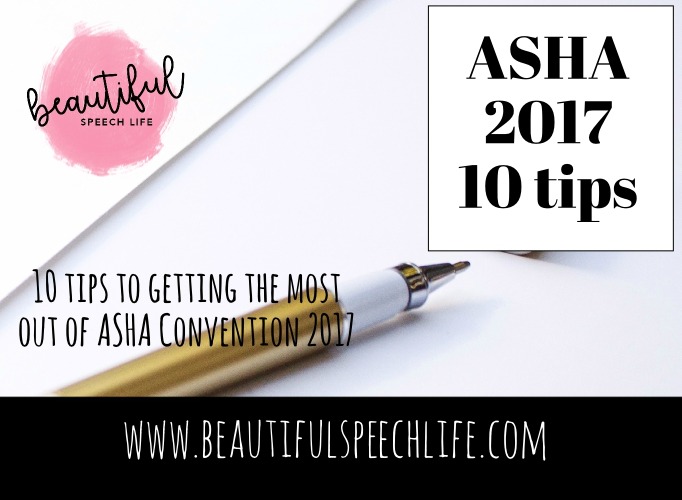
by Anne Page | Oct 27, 2017 | Inspiration, SLP Like a Boss
Who’s going to the ASHA Convention in LA this year? That’s where I’ll be November 9-11 and this will be my 5th ASHA convention. Honestly, with over 15,000 people atteding, it can be a little overwhelming. If you’re a first-timer (or even second or third), I’ve put together 10 tips to getting the most out of ASHA convention 2017.
Tip #1 Plan your courses ahead of time
I know sometimes it’s fun to just wing it, but this is not one of those times. You’re probably spending a lot of money on registration, hotel room, meals, and travel. Let’s get the most bang for your buck, grab your program pocket planner (you should’ve received it in the mail) and highlight some of the courses that look really interesting. Then you can look them up online here.
Tip #2 Plan to make some connections
Think about what specific topics you’re most interested in. Maybe this is an area where you’d like to connect with like-minded SLPs. Show up early for the course so you can talk to some of the people sitting next to you. Even if you’re shy, it’s to say something like “I’m excited about this course” or “how’s the convention going for your so far?”, just break the ice.
Talk to the presenters after their talk.
When you’re walking around if you see an SLP blogger or TPT seller that you follow on social media, say hello.
Tip #3 Show up Early
Some of the courses fill up quickly, so there early and grab a good seat for yourself. It’s no fun standing against the back wall for being in the overflow room.
Tip #4 Bring snacks
Your brain is going to be on overload with all this great new information and just from the energy of being around so many people. You’re going to want to feed it and lots of times the lineup for snack items is really long. I like to bring almonds, trail mix, protein bars and a water bottle. (You’re going to thank me for this tip.)
Tip #5 Plan lunch
Plan ahead for your lunches. If you have back to back courses it’s pretty tricky to leave the convention center and get back on time. Because, let’s face it, everyone’s got to eat, so the restaurants get really crowded. I usually do a combination of the ASHA prepaid lunches and snacks. Or you could plan to skip one of the 1:00 sessions and have a fun lunch with some of your SLP friends. Yes, it’s okay, you don’t have to go to every time slot. It’s important to connect and network too.

Tip #6 Remember shoes are everything
Really consider your footwear. You’re going to be walking a lot and standing a lot in the Exhibition Hall, so keep it comfortable and profesh.
Tip #7 Bring layers
Of course, you can dress however you want. Remember you’re going to be sitting a lot, so you want to be comfortable. But you’re going to want to look professional too, (at least I do). I plan to dress in layers, because you never know what the temperature’s going to be like in each room. There’s nothing worse than trying to concentrate when you’re freezing or roasting.
Tip #8 Plan your Exhibit Hall Attack
The first few times, it can be a little overwhelming because it’s HUGE. Get the floor plan that comes with your registration packet and have a look. (Or look at Tip #10) Does that sound geeky? I just remember my first time. I didn’t have a plan and I ended up getting completely overwhelmed and exhausted. Now I do it differently. I go through the floor plan and highlight all of the booths I know I can’t miss. Then, I make sure I go to those first. I also schedule myself a nice block of time to look at things.
This is a great opportunity to check out some of the big vendor’s booths. There’s always tons of swag. Super Duper has a huge area (it’s like a store), where you can actually purchase therapy materials. They also give you a big huge tote bag to carry everything in. Again, plan ahead, you don’t want to be caring that huge bag with you all day to all your classes.
Tip #9 Explore and have some fun
Take advantage of being somewhere different. Go to some of the meetups, check out a fun restaurant, and maybe you’ll even have time to go to the beach.
Tip #10 Get the ASHA 2017 Convention app.
This free app allows you to sync your schedule and see your friends schedule. It also has maps and a What’s On Now feature to keep you totally in-the-know.
That’s all for now. I hope you find these ten tips helpful and I would love to see you in Los Angeles! I’ll be posting on Instagram (Beautiful Speech Life) and maybe even Facebook Live.
One of the best things about going to an ASHA convention is connecting. We all work so hard, it’s nice to have time to socialize with people who speak our language.











 Struggling to find gifts for your Speech Language Pathologist friends that they’ll actually WANT? These speech language pathologist gift ideas are so fun and useful that they’ll probably be on her favorites list.
Struggling to find gifts for your Speech Language Pathologist friends that they’ll actually WANT? These speech language pathologist gift ideas are so fun and useful that they’ll probably be on her favorites list.







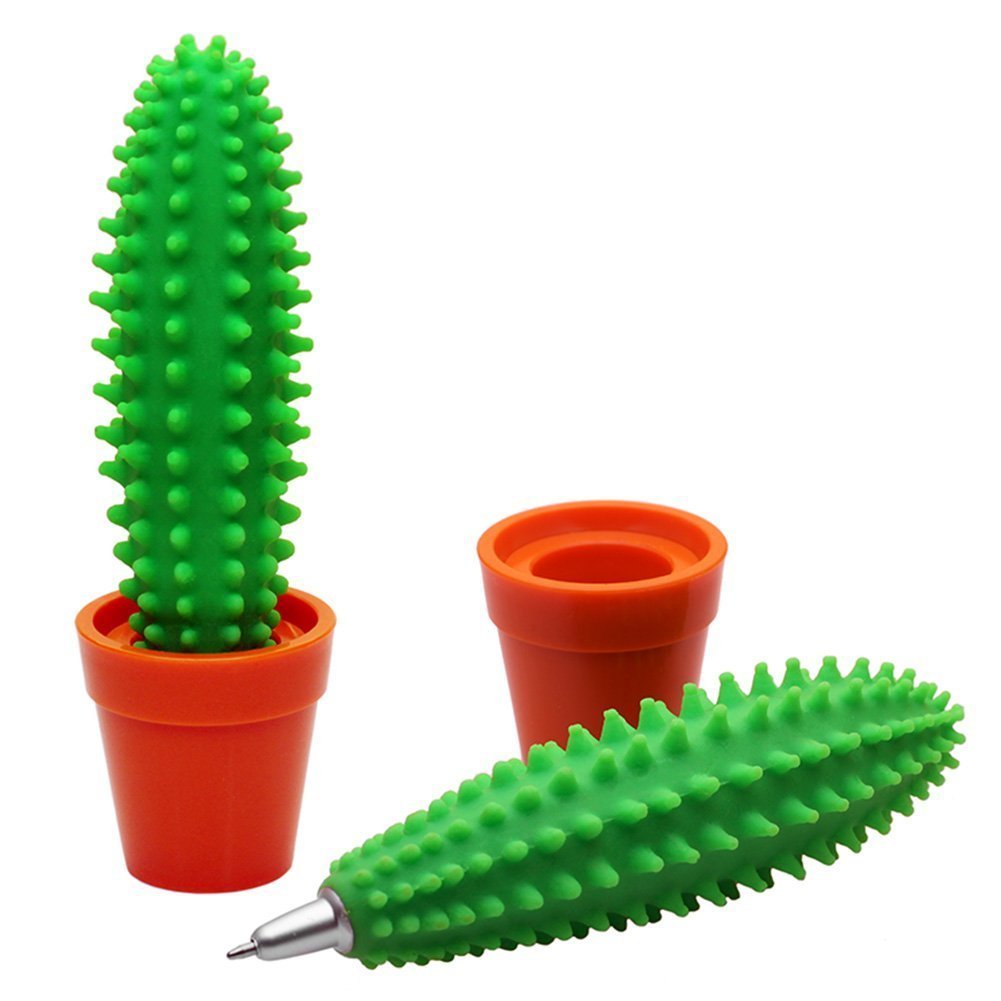





 Hey there I’m Anne Page. I help heart centered SLPs and educators put the fun in functional communication.
Hey there I’m Anne Page. I help heart centered SLPs and educators put the fun in functional communication. 